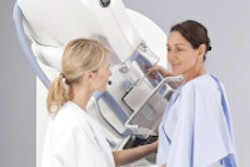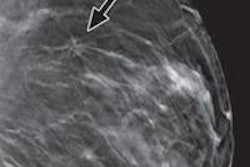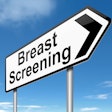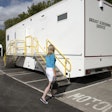The demand for digital breast tomosynthesis (DBT) systems is increasing, according to a new report released on May 14 by market research firm KLAS.
The report, titled "Women's Imaging 2013: Measuring the Options," states that when imaging providers were asked which technology they would choose if they could start over, 62% said tomosynthesis.
"This report sheds light on the continued demand for other breast imaging options," Kirk Ising, KLAS strategic operations director, told AuntMinnie.com. "Digital mammography has been the top dog, but there's more demand for tomosynthesis, and ultrasound is playing a more and more pivotal role as well."
Ultrasound continues to be an effective adjunct technology to mammography for advanced breast imaging and for patients with dense breast tissue, despite the modality's inherent challenges with exam reproducibility and image acquisition time, wrote Monique Rasband, author of the report.
"There is some momentum toward a consistent, standard reimbursement for breast ultrasound, and some vendors are poised to take advantage of it," the report states.
The report includes data from 121 survey participants who gave overall rankings for digital mammography devices. Hologic's Selenia Dimensions received top billing, Siemens Healthcare's Mammomat Inspiration came in second, GE Healthcare's Senographe Essential came in third, and Fujifilm Medical Systems USA's Aspire ClearView CSm came in fourth.
KLAS also found that women's imaging providers prefer using a dedicated mammography information system rather than a general RIS for mammography, with Mammography Reporting System (MRS) as the strongest performer.
Overcoming obstacles
As for obstacles related to women's imaging, 52% of the 121 survey participants ranked reimbursement as their primary concern. Other obstacles included the following:
- Patient education: 37%
- Cost: 34%
- Maintaining workflow: 21%
- Coordination of care: 18%
Density in the spotlight
Finally, the KLAS report addresses the issue of breast density notification, noting that it is a controversial issue that has implications for the women's imaging market.
"Providers agree patients need to be notified and educated, but there is a delicate balance between enough information and resources," Rasband wrote. "Historically, education has been one of the biggest obstacles related to women's imaging, and breast density adds another layer of complexity for patients and providers."




















